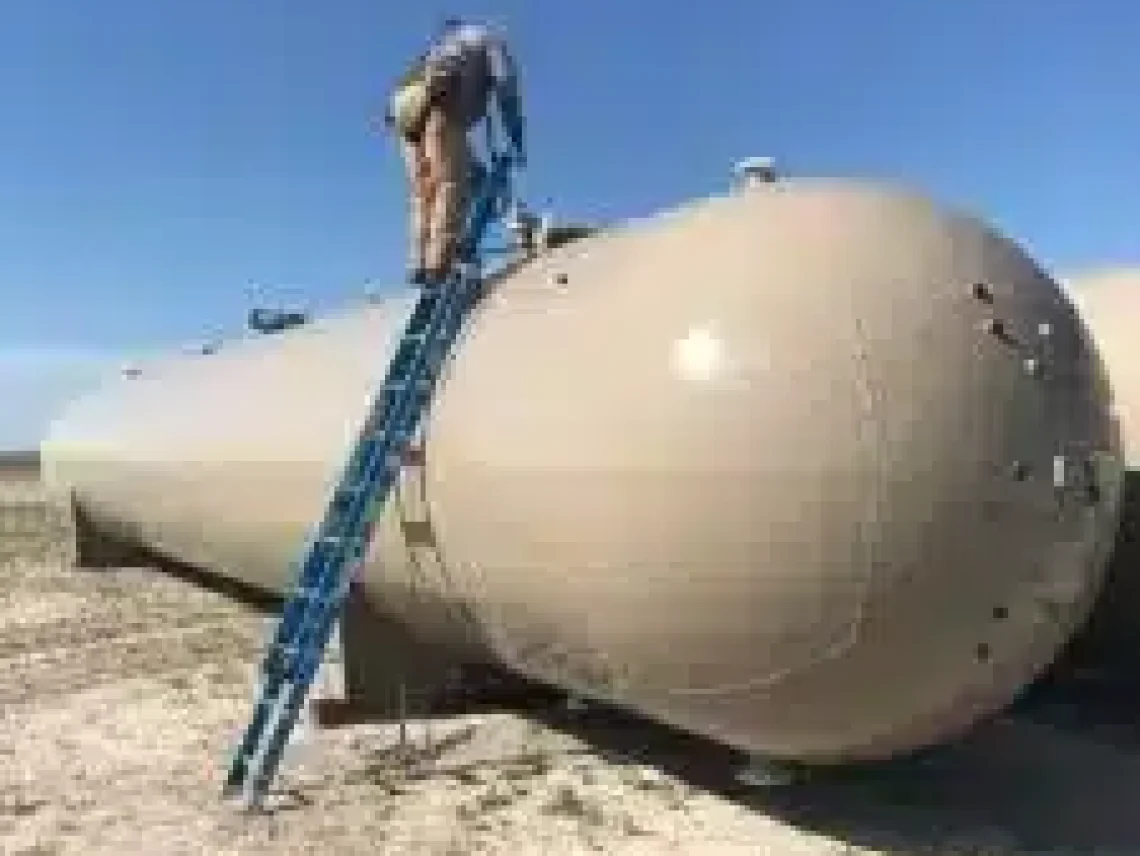The Two Most Common Types of Desiccant Materials Used in Dryers

Table of Contents
ToggleIntroduction to Desiccant Drying Technology
Understanding the Role of Desiccants in Dryers
Desiccants play a crucial role in removing moisture from the air within dryers, a process that is essential for preventing corrosion and maintaining the integrity of stored goods. This is particularly important in sensitive industrial environments, where excess moisture can lead to costly damage. At Red River LLC, we integrate top-tier desiccant materials into our vapor recovery tower vessels to ensure superior moisture control. By doing so, we align with our commitment to quality and American manufacturing values, reinforcing our dedication to long-term reliability.
Overview of Desiccant Materials
What Are Desiccant Materials?
Desiccant materials are hygroscopic substances that are used to induce or sustain a state of dryness in their surroundings. These materials are commonly found in industrial dryers, where they play a critical role in protecting products during storage and transport. By absorbing excess moisture, they help prevent spoilage or damage that could otherwise compromise the quality of stored goods.
Criteria for Selecting Desiccant Materials
When selecting desiccant materials for dryers, Red River carefully considers a range of factors. These include adsorption capacity, thermal stability, and cost-effectiveness, all of which are crucial for ensuring optimal performance. By evaluating these aspects, we guarantee that each pressure vessel and dryer system we design meets the stringent requirements of the industries we serve. This includes sectors such as minerals/elements processing and commercial/public works, where maintaining dry conditions is essential for efficiency and safety.
Silica Gel as a Primary Desiccant Material
Properties of Silica Gel
Silica gel is widely recognized for its high specific surface area and porosity, which make it an excellent choice for moisture control in industrial drying systems. Not only does it effectively absorb moisture, but its chemical stability and inertness also ensure that it does not react with the materials being dried. This makes silica gel a safe and versatile option for a wide range of applications, including those within vapor recovery tower vessels.
Benefits of Using Silica Gel in Dryers
Utilizing silica gel in dryers provides significant benefits, such as improved efficiency, lower energy consumption, and extended equipment lifespan. These advantages are crucial for our clients in the oil and gas and bio-gas sectors, where operational efficiency and reliability are paramount.
Common Applications of Silica Gel in Industrial Drying
Silica gel is extensively used across various industries served by Red River LLC, from power generation to mineral processing. Its ability to effectively control moisture makes it an integral part of the drying processes in our custom-manufactured pressure vessels, ensuring they perform optimally in even the most challenging environments.
Need a reliable partner?
FAQ: Desiccant Materials in Pressure Vessels and Dryers
What factors determine the choice of desiccant materials for specific industrial applications?
Selecting the right desiccant material depends on several factors, including the moisture sensitivity of the product, the dryer or vessel’s operating temperature range, and the economic feasibility of the desiccant regeneration process. Each desiccant offers unique properties, such as moisture capacity and absorption rate, making it suitable for specific industrial environments.
How does the regeneration of desiccant materials work in industrial dryers?
Regenerating desiccant materials restores their drying capacity by removing absorbed moisture. Typically, this process involves heating the desiccant to a temperature that releases the trapped moisture. The method and energy requirements for regeneration vary significantly between materials. For example, silica gel regenerates at lower temperatures, while molecular sieves require higher temperatures but deliver more robust moisture removal.
Are there any innovative desiccant materials on the horizon that could revolutionize industrial drying technologies?
Ongoing research continues to develop new desiccant materials, including metal-organic frameworks (MOFs) and advanced composites. These innovations promise higher efficiency and lower energy consumption for regeneration. Designed for superior moisture control, these materials also provide better thermal stability and potentially reduce environmental impact.
Can desiccant materials affect the purity or quality of the substances being dried in industrial applications?
Most desiccant materials remain inert and do not chemically react with the substances they dry. However, selecting desiccants that do not shed particles or dust is crucial to prevent product contamination. High-quality options, such as bead-formed silica gel, are preferred when maintaining product purity is essential.
What are the environmental impacts of using desiccant materials in dryers, and how can they be mitigated?
The environmental impact of using desiccant materials largely depends on the type of desiccant and its regeneration process. Using desiccants that require frequent and high-temperature regeneration can lead to higher energy consumption and CO2 emissions. Opting for desiccants with longer lifecycles and more efficient regeneration cycles can help mitigate these impacts. Additionally, recycling or reconditioning used desiccant materials can also contribute to environmental sustainability.
Solutions
In the realm of industrial solutions, Red River emerges as a pioneer, offering a diverse range of custom-engineered products and facilities. Among our specialties is the design and production of Custom/OEM Pressure Vessels, meticulously crafted to meet individual client requirements, ensuring performance under various pressure conditions. Our expertise extends to the domain of prefabrication, where Red River leads with distinction.
The company excels in creating prefabricated facilities, modules, and packages, reinforcing its stance as a forerunner in innovation and quality. This proficiency is further mirrored in their Modular Skids offering, where they provide an array of Modular Fabricated Skid Packages and Packaged equipment. Each piece is tailored to client specifications, underlining their commitment to delivering precision and excellence in every project they undertake.
